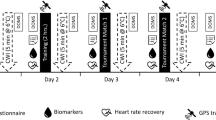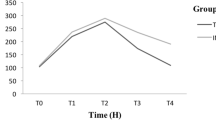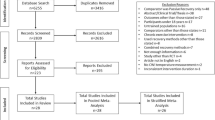Abstract
This study examined the effects of cold-water immersion group (CWI), foam rolling group (FR), and a slow jogging group (SJR) on creatine kinase activity (CK), blood lactate concentration, perceptual measures (PM) and anaerobic performance after exhibition game in futsal players. 24 male futsal athletes, were recruited into the study; 8 participants were assigned to the CWI group were given cold-water recovery, 8 to the FR group were given roller exercises, and another 8 to the SJR group were given slow jogging recovery. All of the groups required to completed a 20-m sprint test was determined before and 24-h after recovery interventions. Creatine kinase (CK) activity was assessed at the pre-sprint test and in 24-h after recovery interventions, and blood lactate concentration in the pre-sprint test, immediately after the match, immediately after recovery interventions, and 15-min after recovery interventions. The total quality recovery (TQR), and visual analog-scale (VAS) was evaluated in pre- and after recovery interventions. CWI group were significantly to reducing blood lactate concentration compared with SJR group in immediately after recovery (3.13 ± 0.46 vs 3.76 ± 0.26, p = 0.026), and 15-min after recovery interventions (1.91 ± 0.37 vs 2.36 ± 0.29, p = 0.007). No prominent differences were detected in all three groups to reducing CK activity in 24-h after recovery interventions. Post-hoc comparisons showed that TQR values in 24-h after recovery interventions of the CWI group were significantly higher compared with RF and SJR groups (all p < 0.001). VAS values were significantly lower in the CWI group than RF (p = 0.002), and SJR (p < 0.001) groups in 24-h after recovery interventions. CWI group more efficient in reducing blood lactate concentration compared with SJR group at immediately after recovery, and 15-min after recovery interventions.




Similar content being viewed by others
REFERENCES
Farhani, F., Rajabi, H., Negaresh, R., et al., Reliability and validity of a novel futsal special performance test designed to measure skills and anaerobic performance, Int. J. Sports Physiol. Perform., 2019, vol. 14, no. 8, p. 1096.
Naser, N., Ali, A., and Macadam, P., Physical and physiological demands of futsal, J. Exercise Sci. Fitness, 2017, vol. 15, no. 2, p. 76.
Valladares-Rodríguez, S., Rey, E., Mecías-Calvo, M., et al., Reliability and usefulness of the 30-15 intermittent fitness test in male and female professional futsal players, J. Hum. Kinet., 2017, vol 60, p. 191.
Pelana, R., Maulana, A., Winata, B., et al., Effect of contrast water therapy on blood lactate concentration after high-intensity interval training in elite futsal players, Physiother. Q., 2019, vol. 27, no. 3, p. 12.
Clarkson, P.M. and Hubal, M.J., Exercise-induced muscle damage in humans, Am. J. Phys. Med. Rehabil., 2002, vol. 81, suppl. 11, p. S52.
Kellmann, M., Bertollo, M., Bosquet, L., et al., Recovery and performance in sport: consensus Statement, Int. J. Sports Physiol. Perform., 2018, vol. 13, no. 2, p. 240.
Wilke, C.F., Fernandes, F.A.P., Martins, F.V.C., et al., Faster and slower post training recovery in futsal: multifactorial classification of recovery profiles, Int. J. Sports Physiol. Perform., 2019, vol. 14, no. 8, p. 1089.
D’Amico, A. and Paolone V., The effect of foam rolling on recovery between two eight hundred meter runs, J. Hum. Kinet., 2017, vol. 57, p. 97.
Haider, M.N., Leddy, J.J., Pavlesen, S., et al., A systematic review of criteria used to define recovery from sport-related concussion in youth athletes, Br. J. Sports Med., 2018, vol. 52, no. 18, p. 1179.
Lee, E.C., Fragala, M.S., Kavouras, S.A., et al., Biomarkers in sports and exercise: tracking health, performance, and recovery in athletes, J. Strength Cond. Res., 2017, vol. 31, no. 10, p. 2920.
Kellmann, M., Preventing overtraining in athletes in high-intensity sports and stress/recovery monitoring, Scand. J. Med. Sci. Sports, 2010, vol. 20, suppl. 2, p. 95.
Skorski, S., Mujika, I., Bosquet L., et al., The temporal relationship between exercise, recovery processes, and changes in performance, Int. J. Sports Physiol. Perform., 2019, vol. 14, no. 8, p. 1015.
Higgins, T.R., Greene, D.A., and Baker, M.K., Effects of cold-water immersion and contrast water therapy for recovery from team sport: a systematic review and meta-analysis, J. Strength Cond. Res., 2017, vol. 31, no. 5, p. 1443.
Hendricks, S., Hill, H., Hollander, S.D., et al., Effects of foam rolling on performance and recovery: a systematic review of the literature to guide practitioners on the use of foam rolling, J. Bodywork Mov. Ther., 2020, vol. 24, no. 2, p. 151.
Versey, N.G., Halson, S.L., and Dawson, B.T., Water immersion recovery for athletes: effect on exercise performance and practical recommendations, Sports Med., 2013, vol. 43, no. 11, p. 1101.
Yeargin, S.W., Casa, D.J., McClung, J.M., et al., Body cooling between two bouts of exercise in the heat enhances subsequent performance, J. Strength Cond. Res., 2006, vol. 20, no. 2, p. 383.
Peiffer, J.J., Abbiss, C.R., Watson, G., et al., Effect of a 5-min cold-water immersion recovery on exercise performance in the heat, Br. J. Sports Med., 2010, vol. 44, no. 6, p. 461.
Vaile, J., Halson, S., Gill, N., and Dawson, B., Effect of hydrotherapy on recovery from fatigue, Int. J. Sports Med., 2008, vol. 29, no. 7, p. 539.
Kinugasa, T. and Kilding, A.E., A comparison of post-match recovery strategies in youth soccer players, J. Strength Cond. Res., 2009, vol. 23, no. 5, p. 1402.
Buchheit, M., Peiffer, J.J., Abbiss, C.R., and Laursen, P.B., Effect of cold-water immersion on post exercise parasympathetic reactivation, Am. J. Physiol.: Heart. Circ. Physiol., 2009, vol. 296, no. 2, H421.
Stephens, J.M., Halson, S., Miller, J., et al., Cold-water immersion for athletic recovery: one size does not fit all, Int. J. Sports Physiol. Perform., 2017, vol. 12, no. 1, p. 2.
Behara, B. and Jacobson, B.H., Acute effects of deep tissue foam rolling and dynamic stretching on muscular strength, power, and flexibility in division I linemen, J. Strength Cond. Res., 2017, vol. 31, no. 4, p. 888.
Bushell, J.E., Dawson, S.M., and Webster, M.M., Clinical relevance of foam rolling on hip extension angle in a functional lunge position, J. Strength Cond. Res., 2015, vol. 29, no. 9, p. 2397.
Ajimsha, M.S., Al-Mudahka, N.R., and Al-Madzhar, J.A., Effectiveness of myofascial release: systematic review of randomized controlled trials, J. Bodywork Mov. Ther., 2015, vol. 19, no. 1, p. 102.
Wiewelhove, T., Döweling, A., Schneider, C., et al., A meta-analysis of the effects of foam rolling on performance and recovery, Front. Physiol., 2019, vol. 10, p. 376.
Romero-Moraleda, B., González-García, J., Cuéllar-Rayo, Á., et al., Effects of vibration and non-vibration foam rolling on recovery after exercise with induced muscle damage, J. Sports Sci. Med., 2019, vol. 18, no. 1, p. 172.
Healey, K.C., Hatfield, D.L., Blanpied, P., et al., The effects of myofascial release with foam rolling on performance, J. Strength Cond. Res., 2014, vol. 28, no. 1, p. 61.
Bangsbo, J., Iaia, F.M., and Krustrup, P., The Yo-Yo intermittent recovery test: a useful tool for evaluation of physical performance in intermittent sports, Sports Med., 2008, vol. 38, no. 1, p. 37.
Kenttä, G. and Hassmén, P., Overtraining and recovery. A conceptual model, Sports Med., 1998, vol. 26, no. 1, p. 1.
Rey, E., Padrón-Cabo, A., Costa, P.B., Barcala-Furelos, R., Effects of foam rolling as a recovery tool in professional soccer players, J. Strength Cond. Res., 2019, vol. 33, no. 8, p. 2194.
Machado, A.F., Ferreira, P.H., Micheletti, J.K., et al., Can water temperature and immersion time influence the effect of cold-water immersion on muscle soreness? A systematic review and meta-analysis, Sports Med., 2016, vol. 46, no. 4, p. 503.
Abaïdia, A.E., Lamblin, J., Delecroix, B., et al., Recovery from exercise-induced muscle damage: cold-water immersion versus whole-body cryotherapy, Int. J. Sports Physiol. Perform., 2017, vol. 12, no. 3, p. 402.
Ascensão, A., Leite, M., Rebelo, A.N., et al., Effects of cold-water immersion on the recovery of physical performance and muscle damage following a one-off soccer match, J. Sports Sci., 2011, vol. 29, no. 3, p. 217.
Frey, W., Wassmer, P., Frey-Rindova, P., et al., Muscle aches and biochemical changes following an ultra-marathon in the cold-modification by diclofenac. Schweiz. Z. Med. Traumatol., 1994, vol. 2, p. 30.
Casanova, N., Reis, J.F., Vaz, J.R., et al., Effects of roller massager on muscle recovery after exercise-induced muscle damage, J. Sports Sci., 2018, vol. 36, no. 1, p. 56.
Stephens, J.M., Halson, S.L., Miller, J., et al., Effect of body composition on physiological responses to cold-water immersion and the recovery of exercise performance, Int. J. Sports Physiol. Perform., 2018, vol. 13, no. 3, p. 382.
Higgins, T.R., Cameron, M.L., and Climstein, M., Acute response to hydrotherapy after a simulated game of rugby, J. Strength Cond. Res., 2013, vol. 27, no. 10, p. 2851.
Montgomery, P.G., Pyne, D.B., Hopkins, W.G., et al., The effect of recovery strategies on physical performance and cumulative fatigue in competitive basketball, J. Sports Sci., 2008, vol. 26, no. 11, p. 1135.
Richman, E.D., Tyo, B.M., and Nicks, C.R., Combined effects of self-myofascial release and dynamic stretching on range of motion, jump, sprint, and agility performance, J. Strength Cond. Res., 2019, vol. 33, no. 7, p. 1795.
Ahokas, E.K., Ihalainen, J.K., Kyröläinen, H., and Mero, A.A., Effects of water immersion methods on postexercise recovery of physical and mental performance, J. Strength Cond. Res. 2019, vol. 33, no. 6, p. 1488.
Ihsan, M., Watson, G., Lipski, M., and Abbiss, C.R., Influence of post exercise cooling on muscle oxygenation and blood volume changes, Med. Sci. Sports Exercise, 2013, vol. 45, no. 5, p. 876.
Yanagisawa, O., Otsuka, S., and Fukubayashi, T., Effect of cooling during inter-exercise periods on subsequent intramuscular water movement and muscle performance, Scand. J. Med. Sci. Sports, 2014, vol. 24, no. 1, p. 11.
ACKNOWLEDGMENTS
The authors would like to thank Institut Teknologi Bandung for providing data for the study.
Author information
Authors and Affiliations
Contributions
Conceptualization: Kuswahyudi; Methodology: Agung Dwi Juniarsyah; Formal analysis and investigation: Junaidi; Writing – original draft preparation: Bagus Winata; Writing – review and editing: Bagus Winata; Funding acquisition: Junaidi; Resources: Sri Indah Ihsani Supervision: Kuswahyudi.
Corresponding author
Ethics declarations
COMPLIANCE WITH ETHICAL STANDARDS
Before the initiation of the study, all participants received an explanation of the procedure and the risks that would later be faced in their participation and they provided informed consent to participate in this study. The study was approved by the ethics committee of the POLTEKKES Bandung, and all procedures were in accordance with the Declaration of Helsinki.
CONFLICT OF INTERESTS
The authors state no conflict of interest with respect to the research, authorship, and/or publication of this article.
Rights and permissions
About this article
Cite this article
Kuswahyudi, Juniarsyah, A.D., Winata, B. et al. Effect of Cold-Water Immersion, Foam Rolling, and Slow Jogging Recovery to Aid Futsal Athlete’s Recovery after One-Off Futsal Match. Hum Physiol 47, 467–477 (2021). https://doi.org/10.1134/S0362119721040083
Received:
Revised:
Accepted:
Published:
Issue Date:
DOI: https://doi.org/10.1134/S0362119721040083




